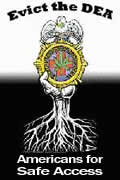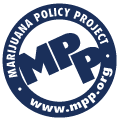By BETH DUFF-BROWN and PAULINE ARRILLAGA,
Associated Press Writers
July 4th 2005
– At the edge of a sprawling raspberry field where Washington state meets British Columbia, a U.S. Border Patrol agent shakes his head at tire tracks that snake between rows of berries and over the international boundary, which here is a gravel ditch so puny a person could leap it.
"They’re long gone," says agent Candido Villalobos, who raced to the scene after a surveillance camera spotted the vehicle — transporting contraband? Drug money? Something more sinister? Too late to know. "They beat us," Villalobos murmurs.
– At Sandwich, Ontario, across the river from Detroit, the Olde Town Bake Shoppe overlooks the Ambassador Bridge, the busiest trade crossing between the United States and Canada. Thousands of trucks rumble along its lanes daily, loaded with everything from Nova Scotia salmon to U.S. auto parts.
But bakery owner Mary Ann Cuderman worries about what else might be passing, especially given public concern that infrastructure could be a terrorist target. A citizens group she heads, the Windsor West Community Truck Watch Coalition, wants closer scrutiny. "How do you feel secure," she says, "knowing that anybody, at any time, could drive right up on that bridge?"
– Near the eastern end of the border, where Maine and New Brunswick touch, the story prompted international headlines, comedians’ snickers and lawmakers’ ire: A man carrying a homemade sword, a hatchet, a knife, brass knuckles and a chain saw stained with what seemed like blood sought entry to the United States. After confiscating his weapons and questioning him, border agents let him in.
Canadian-born Gregory Despres was a naturalized U.S. citizen returning home, U.S. Customs and Border Protection officials explained. But the day after he was admitted to America back in April, authorities in his Canadian hometown found two bodies — one decapitated, the other stabbed to death. Despres was arrested wandering a road in Massachusetts.
"The whole thing gives me a queasy feeling," says Colin Kenny, chairman of Canada’s Standing Senate Committee on National Security and Defense.
Two U.S. congressmen, Edward Markey and Stephen Lynch, sent a letter to
Homeland Security Secretary
Michael Chertoff, seeking answers about the Despres case and a review of entry procedures. Said Markey: "Giving the green light to this deranged individual to enter our country raises serious questions about these procedures."
Balancing the historic openness of the U.S.-Canada border with today’s necessary wariness is a challenge the two nations still have not mastered — and some fear the continued ambivalence could be harmful.
"Despite what should have been the wakeup call of September 11, 2001, there has been an unsettling lack of progress on both sides of the border to improve efficiency and strengthen security at land border crossings," said a 192-page report issued last month by Kenny’s committee.
It calls for a hardening of border security on the Canadian side — arming of border agents, like their U.S. counterparts, and giving the minister of public safety authority to expedite border infrastructure construction and the right to eminent domain in the name of national security.
And last week, Chertoff and his counterparts from Canada and Mexico met in Ottawa to pledge better integration of terrorist watchlists and other measures to counter threats against the "three friends living in the same neighborhood."
Yet tightening rules along the border is rarely easy. This spring the Bush administration first proposed, then held up, a plan to require passports of everyone entering the United States from Mexico, Bermuda, the Caribbean, Panama and Canada. The latter nation is the largest U.S. trading partner, with more than a billion dollars worth of goods crossing the border daily.
"If people have to have a passport, it’s going to disrupt the honest flow of traffic,"
President Bush said, backing off the plan, though he added, "On the larger scale, we’ve got a lot to do to enforce the border."
Much has already been done, of course. In the Blaine, Wash., border sector, where the raspberry field tire tracks were found, 32 new camera surveillance systems are online and 133 agents on staff, 2 1/2 times the number prior to Sept. 11.
Still, Eugene Davis, retired deputy chief of this Border Patrol sector, frets: "We are still wide-open." In a letter to the Sept. 11 commission, he expressed fear that terrorists would exploit the porous border.
Canada’s welcoming immigration policies and limited border enforcement have long been the subject of scrutiny from Americans, who fear a terrorist claiming refugee status could lie in wait to carry out a mission down south.
That threat still exists, says David Harris, former chief of strategic planning for the Canadian Security Intelligence Service, Canada’s counterpart to the
CIA. Harris asserts more than 50 terrorist organizations have a presence in Canada.
"Canada has essentially said, if you put your foot in Canada and you declare yourself a (Geneva Convention) refugee, then by and large you are," says Harris, who now heads a security firm. "All of that has implications; it means that we’re quite susceptible to penetration."
People worry about penetration all along the border.
At the mile-and-a-half-long Ambassador Bridge, vehicles are not inspected before they embark from either country; as with other border spans, that only happens once they reach customs officers at the opposite end.
Skip McMahon, a spokesman for Detroit International Bridge Co., the private owner, declines to spell out safety measures taken since Sept. 11 but says "we have hardened our assets. We have employed armed guards on and around our bridge 24 hours a day, seven days a week."
Concerned citizens, he says, should get both federal governments to move on a proposal for inspections of suspicious cargo before vehicles cross.
Canada has one of the most democratic, multicultural societies in the world. Instead of closing doors to immigrants post-Sept. 11, the nation continues to encourage foreigners to come and work. Critics caution that welcoming some 250,000 new immigrants and refugees each year potentially opens the door to terrorists.
"Canada’s the only country that I would say hasn’t significantly tightened up," says Martin Collacott, Canada’s former ambassador to
Syria and Lebanon and once director general for security services and counterterrorism within the ministry of foreign affairs.
He describes the refugee system as "dysfunctional." A Canadian government report this year notes that refugee claims can be delayed up to two years, meaning potentially dangerous applicants can disappear.
Though not a refugee, Fateh Kamel, suspected former ringleader of an Islamic extremist group, easily returned to Montreal in January after serving a prison term in France for terrorist plots there. His Canadian passport (he holds Algerian-Canadian citizenship) gave officials no choice but to admit him — though some lawmakers have since suggested his citizenship be revoked.
The case has parallels to that of Despres, the naturalized American with the chain saw, who authorities said violated no immigration rule.
About 1,000 U.S. Border Patrol agents work along the U.S.-Canada border, roughly triple the 2001 force but a fraction of the 9,600 agents who patrol the Mexican border, about half as long at 1,900 miles.
On the Canadian side, no single agency specifically patrols the border. Rather, it is monitored by 23 enforcement teams, consisting of officers of the 4,500-member Canada Border Services Agency, supplemented by the Royal Canadian Mounted Police and local police departments.
Most of Canada’s 160 land and maritime border crossings are staffed by only one guard, unarmed for now. Long stretches between official entry points go unmanned.
On both sides of the border, mountaintop forests and island-dotted waterways harbor hidden nooks where helicopters, motorboats, even kayaks drop off or collect drugs.
Recalling a highly publicized terrorist case, U.S. Immigration and Customs Enforcement agent Peter Ostrovsky says, "We’re lucky that Ahmed Ressam did not hook up with Canadians smuggling contraband into the country."
Ressam, with ties to the Algerian Armed Islamic Group, was arrested in 1999 in Port Angeles, Wash., as he drove off a ferry from Canada. Customs agents, suspicious of his nervous behavior, searched his trunk and found explosives. Ressam, who had been living in Montreal, was convicted of plotting a blast at the Los Angeles airport.
Last August, the U.S. Department of Homeland Security added a small air and marine operations branch south of Blaine to help police 200 miles of water dividing the United States and Canada. In October, a similar base opened in Plattsburgh, N.Y., and branches are planned for Michigan, North Dakota and Montana.
Kenny, the Canadian Senate security committee chairman, wants customs agents on his side of the border to focus more on pulling over other potential Ressams for secondary questioning, rather than nabbing commuters for smuggling in consumer goods.
"We’ve got to change the culture of having tax collectors to front-line country protectors," he says.
Kenny’s committee has found successes post-Sept. 11, such as Canada’s modernizing of surveillance technology to identify ships heading to its ports. It praises the government for raising military spending and improving cooperation with the United States.
The friendship between the countries has a potent symbol in downtown Blaine. Peace Arch Park, 20 acres dotted with picnic benches and swing sets, straddles the international line. People from both nations may meander through its gardens — so long as they go home at day’s end.
Many don’t.
Palestinian Gazi Ibrahim Abu Mezer, convicted in 1998 of plotting to bomb a New York subway, illegally entered the United States this way.
On June 29, 1996, six days after he’d been caught crossing the border farther east, Mezer jogged through the park. A Border Patrol agent stopped him and returned him to Canada, where he had a pending immigration application. He would return to the United States months later, again crossing the Washington border.
Directly across from Peace Arch Park on the Canadian side is the home of 84-year-old Dorothy Kristjanson. She recalls watching a whole family illegally crossing, heading south; another time, a burglar going north dropped backpacks on her porch and fled.
"It’s something that happens every day," she said one recent morning. "If I see somebody go by here with a backpack and I say, `Uh-oh, he looks cagey,’ I’ll phone (authorities) and say, `Keep an eye on that guy.’"
But she isn’t too concerned.
"You know," she said, "the border’s pretty safe."
Safer, anyway, many officials contend.
A few months after the Sept. 11 attacks, Canada adopted a new anti-terrorism act and a "smart border" plan with Washington intended to increase security while permitting the flow of commerce and some 300,000 people across the border each day. Today, U.S. and Canadian screeners work jointly at eight major airports.
In 2003, a new agency — Public Safety and Emergency Preparedness Canada — was created, a counterpart to the U.S. Homeland Security department.
A program that identifies low-risk frequent travelers and gives them speedier crossings has enrolled 76,000 people. An additional 54,000 truckers have been screened for faster passage.
"Security has increased dramatically," says Danny Yen, a spokesman for the Canada Border Services Agency. "It’s not only on the program side, but also on the intelligence side."
In Blaine, the Border Patrol’s Joe Giuliano believes security is greater but speaks pragmatically:
"Am I going to tell you I’ve hermetically sealed this border? No, that’s not true. I can put a million agents out there and have them run willy-nilly across the border catching everything that moves and throwing it back. Two hours later, they’re going to try again … and sooner or later somebody’s going to find that one little seam and exploit it."
___
EDITOR’S NOTE — Beth Duff-Brown, AP’s Canada bureau chief, reported from Ontario and Ottawa; Pauline Arrillaga, an AP national writer, reported from the Blaine, Wash., area.



 Button Ads!
Button Ads! 




